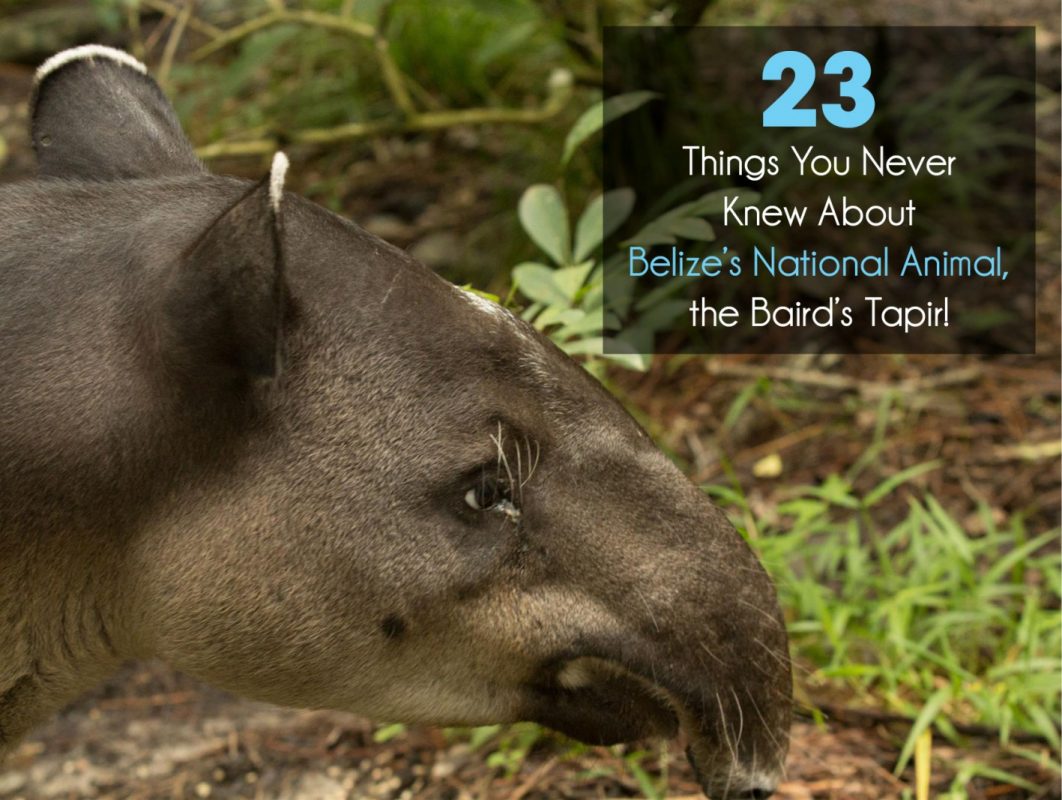1. We kind of gave this one away with the title up there, but the Baird’s Tapir is Belize’s National Animal! The Tapir joins the Keel-billed Toucan, Black Orchid and Mahogany Tree, as the National Symbols of Belize.
2. Named after American naturalist Spencer Fullerton Baird, the Latin name is Tapirus bairdii.
3. There are five species of Tapir worldwide, found throughout the tropics of South America, Central America, and Asia.
4. The Baird’s Tapir ranges from Mexico, throughout Central America and the Western side of the Andean Mountains.
5. They occur in rainforests, deciduous forests, flooded grasslands, and lower montane forests. In Belize, they are found throughout the country.
6. Their closest relatives are the Rhinoceros and the Horse and other odd-toed ungulates. The tapir has three toes, giving its footprints an oddly dinosaur-esque look.
7. In Belize, they are commonly known as “mountain cow” or “danta”
8. The Baird’s Tapir is the largest land mammal in Belize. They can grow to 6 feet long and weigh between 300-500 pounds.
9. The lifespan of a Baird’s Tapir is up to 22 years.
10. Their long proboscis helps them to strip young buds and leaves off of twigs. They eat a variety of understory vegetation and aquatic plants.
11. Their eyesight is extremely poor. They rely on their excellent sense of smell (check out that nose) and hearing to detect danger.
12. Tapirs nocturnal are most active at dusk and throughout the night. They are sometimes seen cooling off in the heat of the day in rivers or lagoons.
13. Their gestation period is 390-400 days and mothers give birth to a single young, called a calf.
14. Young are camouflaged in stripes, like a deer. They are often referred to as “watermelons,” due to their rotund stripey-ness.
15. Calves reach maturity in three years and stay with their mothers for one to two years, typically.
16. What does the tapir say? They are generally silent but do communicate with a variety of shrill whistles, mainly to call their young and to announce their territory.
17. They are an occasional natural food source for jaguars and pumas.
18. Considered a “living fossil,” their body shape is thought to have changed very little over 35 million years, though their proboscis may be a more recent evolutionary change.
19. The Tapir is a protected species in Belize. The main threats to their survival are habitat loss, poaching, and automobile collisions.
20. Their conservation status is Endangered. In 2006, the total population throughout its range was estimated at 5,500 Baird’s Tapirs remaining in the wild.
21. Though they are endangered, there are many opportunities to see them in the wild in Belize. Protected areas such as Cockscomb Wildlife Sanctuary are known to have many resident tapirs.
22. Get up close and personal at the Zoo! The Belize Zoo has a collection of Baird’s Tapirs in “Tapir Town” that will have you instantly in love with these cute critters. Private animal encounters with a keeper allow you to feed and pet these lovable animals.
23. April the Tapir was famously one of the very first animal ambassadors at The Belize Zoo, founded in the late 1980’s after the zoo director, Sharon Matola, took in a variety of Belizean animals used in film production. April has since passed away, but her legacy of conservation and protection for Tapirs lives on!
There you have it! 23 facts about our favorite long-nosed, three-toed gentle giant. Happy World Tapir Day! Be sure to be on the lookout for the Tapir on your next visit to Belize.



